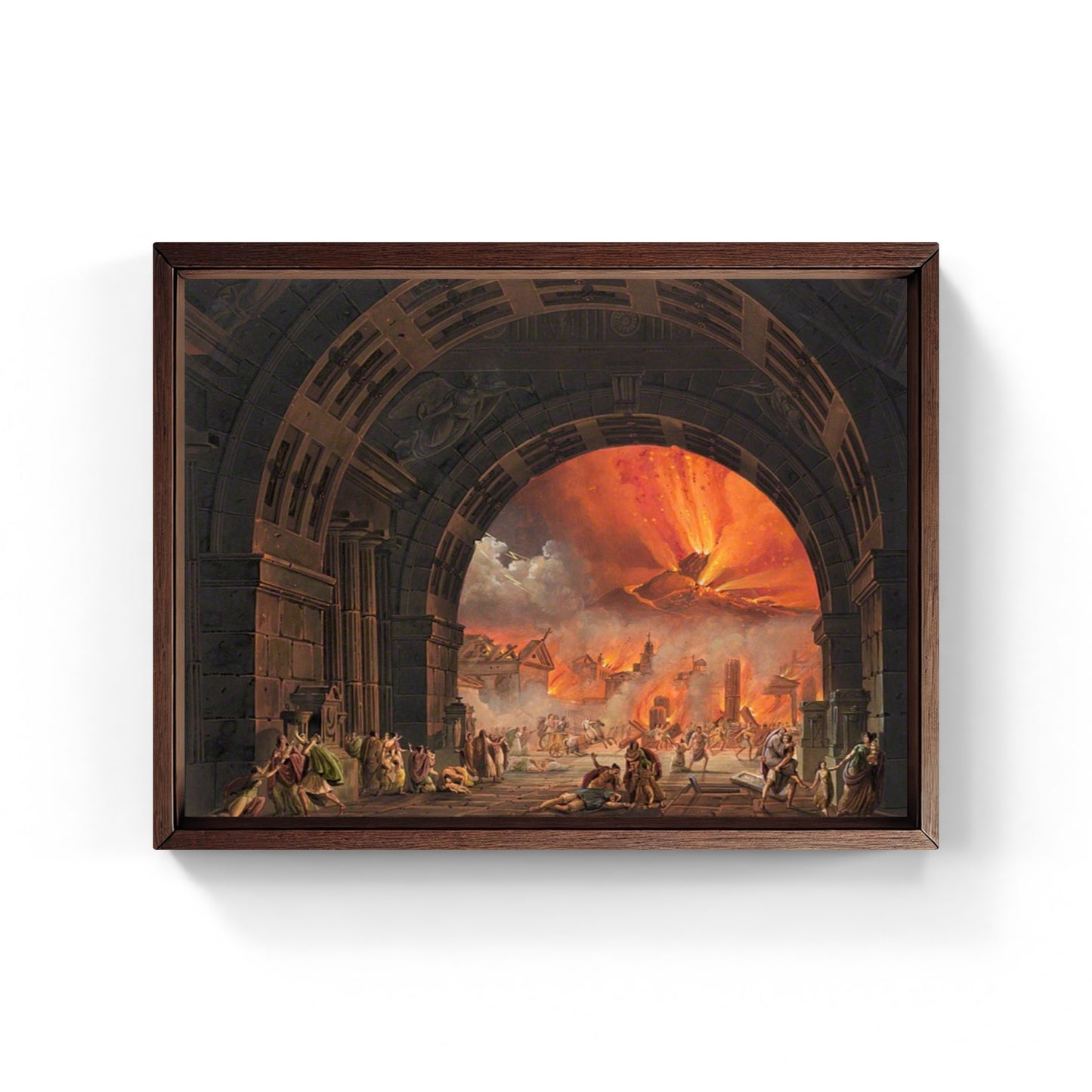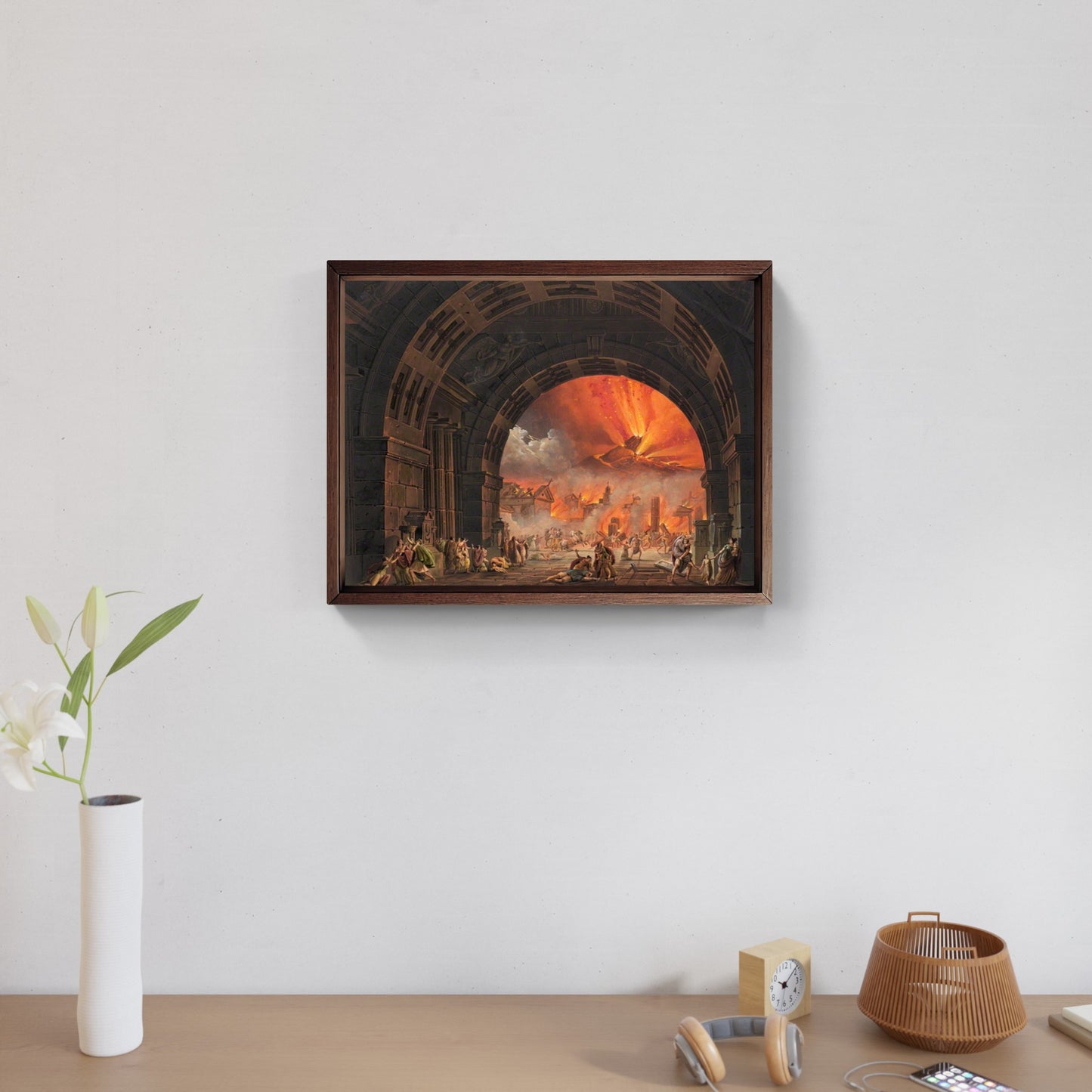Eruption of Vesuvius by Alessandro Sanquirico from The Last Day of Pompeii by Pacini
Eruption of Vesuvius by Alessandro Sanquirico from The Last Day of Pompeii by Pacini
Couldn't load pickup availability
SKU:YZPQ8RTML9K3W
PAY IN THREE INSTALLMENTS WITH PAYPAL
This sketch by Alessandro Sanquirico, painter and screenwriter, was created as a backdrop for Giovanni Pacini's 1825 play "The Last Day of Pompeii." The eruption of Vesuvius represents the opera's dramatic climax, surrounding the scene in an atmosphere of terror and sublime grandeur. Flames, red flashes, and dark clouds dominate the stage, while lapilli and ashes come down like a deadly rain on the terrified inhabitants. Music accompanies each tremor, emphasizing the chaos and dismay of the city with orchestral force.
Sanquirico translates the volcano's natural power into pure emotion: the choirs cry out supplications and invocations to the gods, while the opera's heroes struggle between love, faith, and despair. The eruption is not simply a natural event; it becomes a symbol of implacable fate, human frailty, and the collapse of an entire civilization. The contrast between the beauty of Pompeii and the destructive fury of Vesuvius heightens the emotional impact of the play.
This scene, of extraordinary visual and aural power, helped to fix the apocalyptic image of the eruption of 79 AD in the Romantic imagination. In The Last Day of Pompeii, musical art and spectacular stagecraft merge to convey the sense of an epochal catastrophe, in which nature becomes the absolute and inexorable protagonist. A theatrical moment that continues to amaze with its pathos and evocative power.





Scopri i pregiati materiali di Trizio Editore
Carta di Amalfi fatta a mano, cornice in legno di faggio e vetro museale. Guarda i particolari dei prodotti che renderanno la tua casa più elegante e preziosa.





